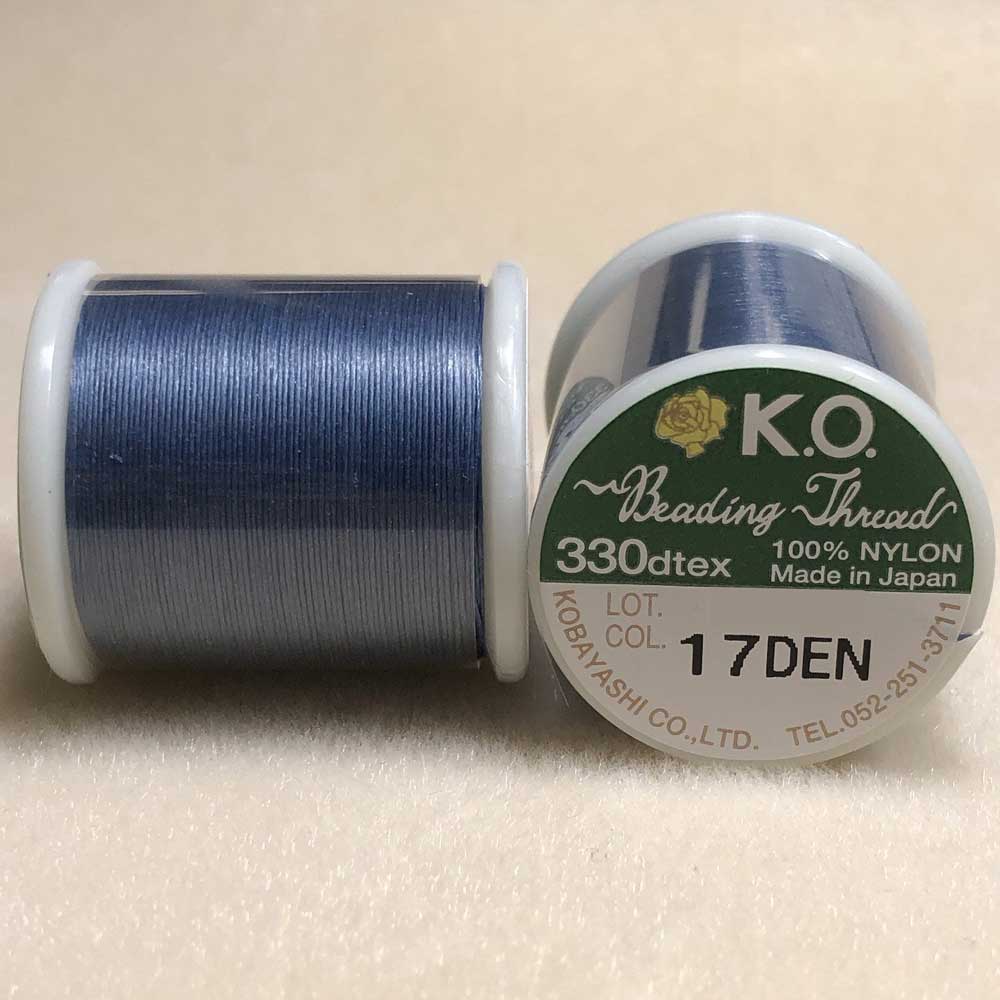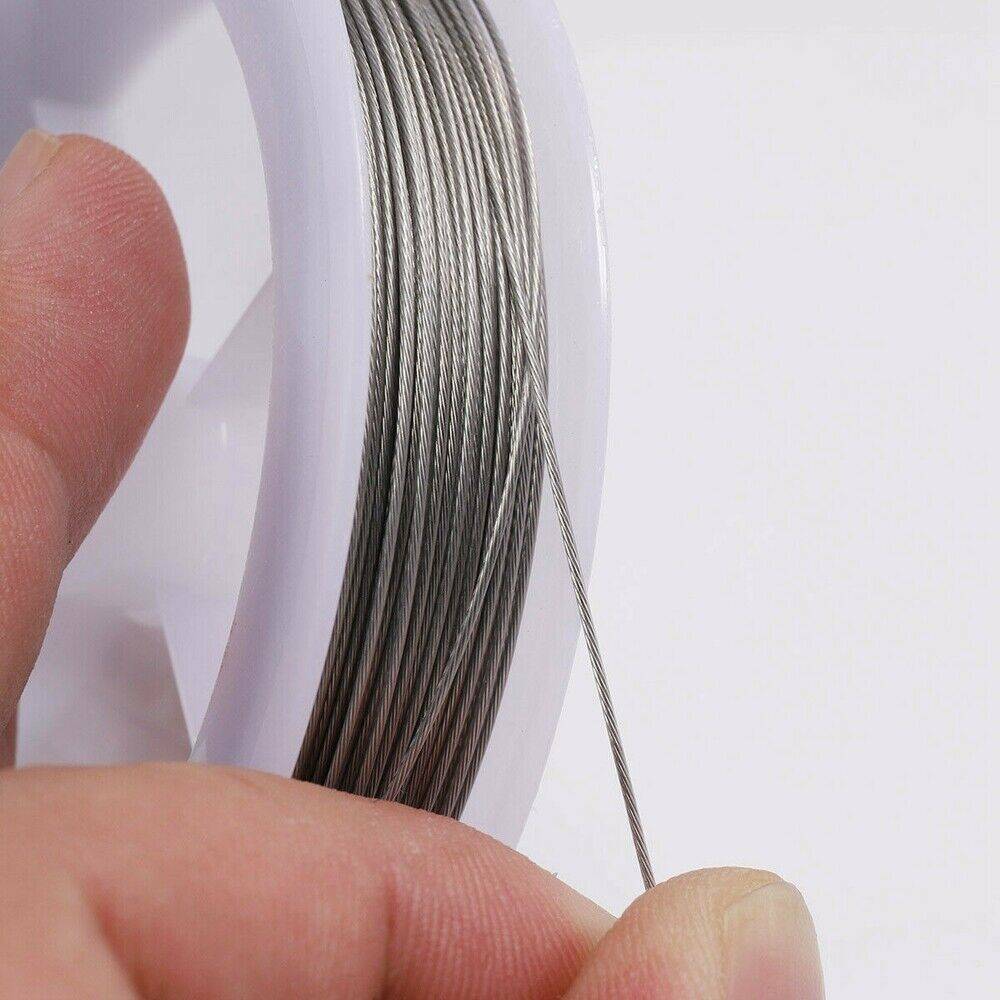Introduction to KO Beading Thread
KO beading thread is a favorite among many beaders. It hails from Japan, boasting several qualities that make it a go-to choice for beading projects. Those who use KO thread appreciate its colorfast nature, strength, and resistance to fraying. Additionally, this thread is pre-waxed and reputed for knotting firmly without the need for additional waxing.
Its lack of stretch and strong hold on knots often outshines other threads like Nymo. Beaders admire its slight sheen and neutral color, which provides an elegant backdrop for various bead colors. The versatility of KO thread makes it suitable for different projects, from delicate fringe earrings to structural peyote stitch designs.
The ease of threading into a needle and its durability during the beading process add to its popularity. Crafters often seek a thread that can endure the wear and tear of beading without losing its integrity, and KO thread meets these expectations. With its well-rounded features, KO beading thread is a choice worth considering for your next beading endeavor.

Comparison to Other Beading Threads
When selecting a beading thread, it’s crucial to understand how different threads stack up against each other. KO beading thread has several notable differences when compared to other common threads like Nymo.
Nymo Beading Thread
Nymo, a well-known beading thread, is often chosen for its widespread availability and cost-effectiveness. However, unlike KO beading thread, Nymo is more prone to stretching and fraying, which can be troublesome during intricate beading projects. As observed in practical comparisons, Nymo’s tendency to loosen at the end of each row can create tension problems for the beader.
KO beading thread, on the other hand, holds its tension more consistently. This means projects stay firm without having to constantly adjust the tightness of the thread. Moreover, Nymo may require additional waxing to knot well, whereas KO thread’s pre-waxed nature simplifies the process, enhancing the beading experience.
Choosing between KO and Nymo may come down to the specific requirements of your beading project. If you need a sturdy thread that doesn’t stretch and is resilient against fraying, KO thread could be your best bet. But if you’re looking for a more traditional option and don’t mind managing the stretch factor, Nymo could still be a practical choice. Ensure that the thread you select complements your beading style and project needs to achieve the best results.
KO Thread Features
KO beading thread stands out with its specific characteristics that make it a reliable choice for beaders.
Color and Sheen
First and foremost, the color and sheen of KO thread add a touch of sophistication to any beading project. It boasts a neutral tone, unlike some threads that can appear yellowish, which might not complement all bead colors. The slight sheen of KO thread gives beadwork an elegant finish, amplifying the beauty of the beads used.
Strength and Durability
In terms of strength and durability, KO thread ranks high on the list of preferences among beaders. With a reputation of being robust and a 4 lb. test strength, it suits a variety of beadwork styles. The thread is resistant to fraying, which is a common annoyance with some other types of thread like Nymo. The resilience of KO thread lies in its pre-waxed design, allowing it to retain its structure without stretching over time. This aspect is crucial, particularly for pieces that are handled frequently or may experience movement, such as fringe on earrings or beaded bracelets.

Beading Projects Suitable for KO Thread
KO beading thread is ideal for a variety of projects.
Fringe Earrings
For those who love to create fringe earrings, KO beading thread is an excellent choice. The thread’s softness and flexibility allow for a flowing, drapey effect that is perfect for fringe. Its strength ensures that the earrings maintain their shape, even with repeated wear. Additionally, the thread’s resistance to fraying contributes to the durability of the earrings, making them last longer.
Peyote Stitch Earrings
Another project where KO beading thread shines is in peyote stitch earrings. With KO thread, beaders can achieve a tight and even tension throughout the piece. The thread’s lack of stretch helps maintain the shape of the pattern, giving a neat and professional look to the finished earrings. Despite its robust nature, KO beading thread may be too soft for some peyote stitch projects, but for most, it offers a balance between firmness and flexibility.
Practical Tips When Using KO Beading Thread
Pre-stretching and Tension Issues
To avoid issues during beading, pre-stretch KO beading thread before starting. This practice ensures consistent tension throughout your project. You’ll notice that KO thread has minimal give, which aids in maintaining the structure of your design. When creating beadwork, monitor your tension carefully. If the tension is too loose, your beads may not sit correctly. Keep your tension even, but not too tight, as over-tightening can warp your beadwork.
Managing Thread Waste
To manage thread waste, it’s vital to cut a length of thread that’s ample for your project. Estimate generously to prevent the frustration of running short. Remember, adding more thread if needed is simpler than dealing with the annoyance of too little. Trying to save on thread can cost more time than it’s worth. It’s wiser to work with a bit more thread than to end up wasting time correcting avoidable mistakes.
When finishing your beading work, leave enough thread to weave back into the piece to secure your stitch. This will enhance the durability of your beadwork and prevent it from unraveling over time. Lastly, store your KO beading thread properly. Keep it away from direct sunlight and damp places to maintain its quality and prolong its life. Consistent care in storage will preserve the thread’s performance for future projects.
Myths and Misconceptions about KO Thread
In the world of beading, some myths and misconceptions about KO beading thread persist.
Alleged Similarities to One-G Thread
Many believe KO thread is identical to One-G thread. However, they differ in dtex size. One-G has 300 dtex, while KO has 330. They also seem to have different ‘body’ feels. It’s not totally clear if they are the same. Despite both being from Japan, their distinct characteristics are notable. The color variety of each brand lends unique attributes to your beadwork.
Claims of Origin
Another common claim is KO thread was created by Nozue Sonoka. This may be part confusion with another thread named SoNo. The truth behind this is unclear; more research would confirm it. It’s important to verify such details for accurate information. Misinformation can lead to assumptions that affect choice and use in projects.

Final Thoughts on KO Beading Thread
Choosing the right beading thread is crucial for the success and longevity of your projects. KO beading thread has unique qualities that could be ideal for specific applications in beadwork.
Ideal Uses in Beadwork
KO beading thread shines in projects requiring softness and durability. Its colorfastness and resistance to fraying make it superior for long-lasting creations. Fringe earrings benefit from its flow and drape, while peyote stitch work can enjoy its consistent tension.
With KO thread, wastage is minimal as it endures handling well. It’s easy to see why this thread has a dedicated fan base. Its strength, durability, and sheen make it a reliable option for beaders seeking quality. Whether for dynamic fringe or the structured formality of peyote stitches, KO thread delivers commendable results.
When you weigh in factors like fraying resistance, color consistency, and ease of use, KO beading thread presents a compelling case. It supports the structure of the beads well and enhances the overall appearance of the finished beadwork.
Ultimately, your style, project needs, and personal preference will guide your choice. KO thread’s attributes might just make it the perfect match for your next beading adventure. Remember to pre-stretch, manage tension, and avoid waste for an enjoyable beading experience with KO thread.
